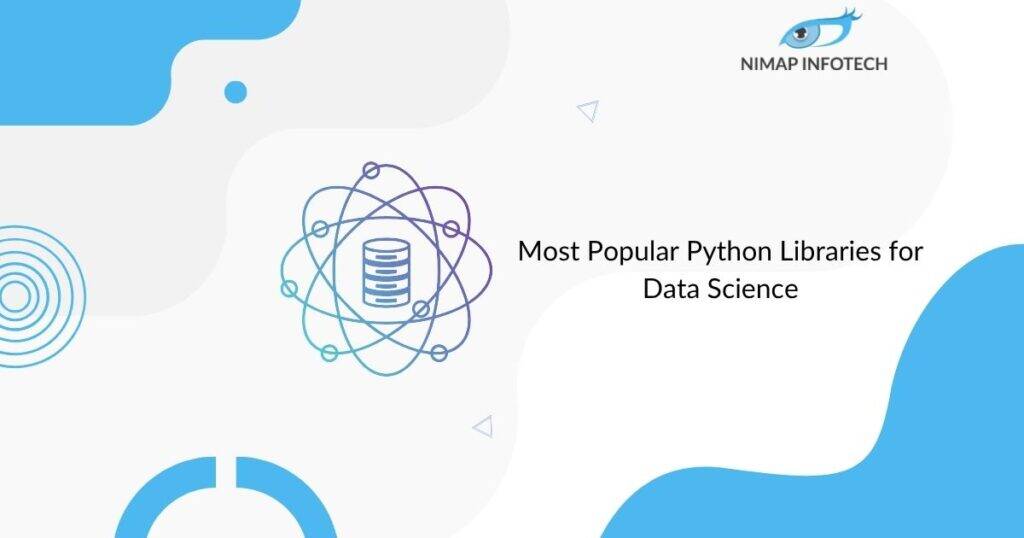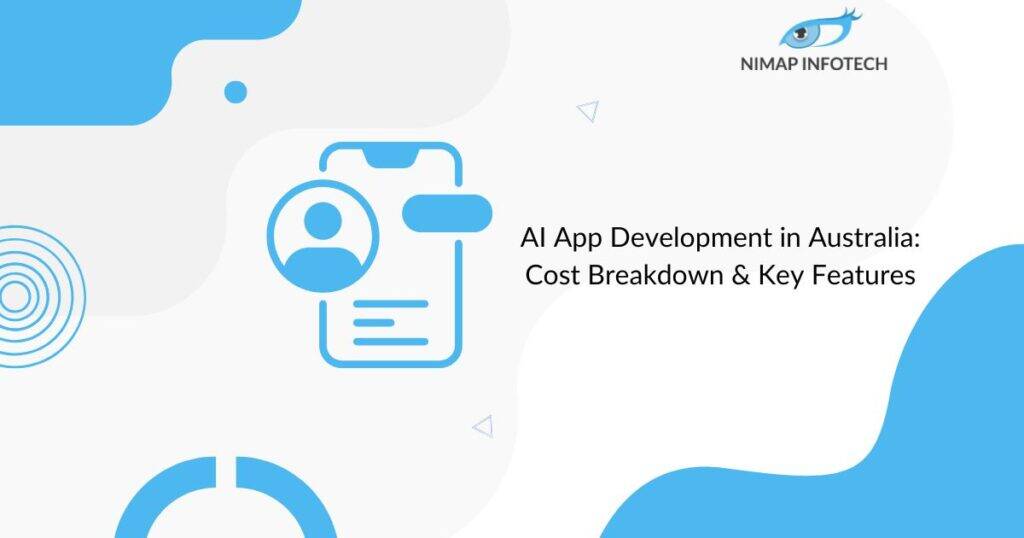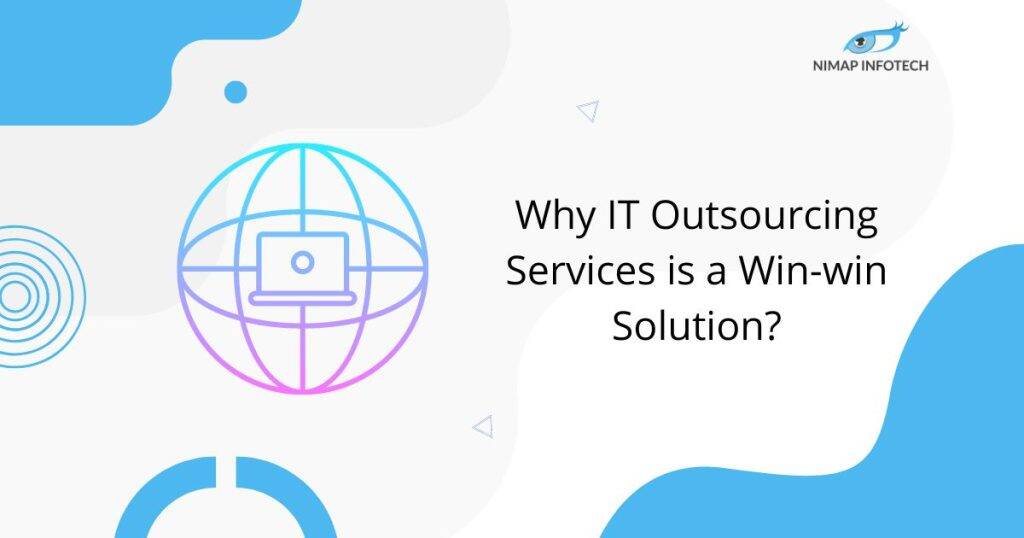Dubai is rapidly establishing itself as a global software development hub, driven by the increasing adoption of Artificial Intelligence (AI), cloud computing, and custom software solutions. The city’s thriving IT landscape is transforming at an accelerated pace, encouraging the broader UAE technology sector to scale new heights. Over the past decade, terms like Big Data and Cloud Computing have revolutionized how businesses operate. Today, these technologies are so seamlessly integrated into everyday systems that they often go unnoticed. In this new era, cutting-edge innovations such as AI, Machine Learning, and IoT are shaping the next wave of digital transformation.
According to a leading global data and business intelligence platform, the Software as a Service (SaaS) development market is projected to reach USD 328.20 billion in 2024. With an impressive CAGR of 19.30% between 2024 and 2029, it is expected to grow to USD 793.10 billion by 2029. This global momentum is strongly reflected in the UAE market, especially in Dubai, where custom software development is gaining significant traction.
In this blog, we’ll explore the software development market in the United Arab Emirates, identify the latest industry trends, and highlight why investing in custom software development in Dubai is a strategic move for businesses. Most importantly, we’ll dive into crucial aspects of software development costs, from estimating software development costs to understanding custom software development costs in Dubai.
Whether you’re a startup or an enterprise, knowing how to estimate software development costs and strategically capitalize software development costs can significantly impact your ROI. We’ll also share practical insights on how to reduce software development costs without compromising on quality. Stay tuned as we break down the essentials for any business looking to harness the power of Dubai’s digital ecosystem efficiently and cost-effectively.
What is Software Development?
Software development is the structured process of designing, creating, testing, and maintaining software applications or systems. It encompasses a wide range of activities, including planning, requirement gathering, coding, debugging, deployment, and post-launch support. The goal is to produce reliable, scalable, and user-friendly software that meets business objectives and user needs.
Who are Software Developers?
Software developers (also referred to as programmers or coders) are professionals who use programming languages and frameworks to build various types of software, such as system software, application software, and embedded software. These professionals use tools like version control systems, APIs, and development environments to ensure seamless integration and performance.
Phases of Software Development
The steps of a typical Software Development Life Cycle (SDLC) are as follows:
1. Gathering Requirements
- This phase involves understanding business goals, identifying technical needs, and analyzing constraints.
- Stakeholders and the software development team work together to record both functional and non-functional requirements.
2. UI/UX Design
- Designers create wireframes, mockups, and prototypes that serve as blueprints for software architecture.
- This phase ensures the interface is intuitive and user-friendly.
3. Implementation
- During implementation, developers begin coding using suitable programming languages, frameworks, and development tools.
- They also apply version control systems like Git for collaboration and tracking.
4. Testing
- Software testing ensures the software is bug-free and meets quality standards.
- This includes functional, non-functional, automated, and manual testing to verify performance, security, usability, and scalability.
5. Deployment
- The software is released to production. Deployment can be done on an on-premise infrastructure or through cloud services.
- Techniques such as A/B testing or data migration may be used during rollout.
6. Support and Maintenance
- After deployment, the dedicated development team addresses bugs, implements improvements, and ensures regular updates.
- This ongoing process ensures the software remains relevant and secure.
Must Have Features to Build Software in Dubai
Organizations today invest in software not just to automate tasks but to enhance efficiency, streamline workflows, and stay competitive in the market. One of the most critical aspects that determine the software development costs is the feature set it includes. Whether you’re developing enterprise tools or consumer-facing platforms, the integration of essential features within your budget and timeline can significantly influence success. If you’re looking to estimate software development costs in Dubai, here are the must-have features to consider that balance usability, functionality, and budget efficiency:
1. Intuitive Design
A clean, user-friendly interface plays a vital role in maximizing engagement. Modern software must support responsive UI/UX across desktop, mobile, and tablet. Key UI/UX elements include:
- Clear navigation menus
- Structured dashboards
- Customizable themes and color palettes
This not only improves user experience but also helps reduce software development costs related to post-launch fixes and user training.
2. User Authentication
Secure login and account management are foundational features in most custom software. Core components include:
- Signup/login via email, phone, or social platforms
- Role-based access control (RBAC)
- Two-factor authentication (2FA), OTP, biometric, or email verification
When calculating software development expenses, strong authentication is also a useful factor, particularly for apps that handle sensitive data and compliance.
3. Storage Management
Data handling is central to any functional software. Proper database and storage systems must be implemented using:
- SQL/NoSQL databases
- Cloud integration (AWS, Google Cloud, Azure)
- Automated data backup and disaster recovery
Planning storage early helps in estimating software development costs more precisely and ensures scalability.
4. Function Integration
Each software serves a specific purpose. Based on industry type, these functions may vary:
- E-commerce: product listings, cart management, and payment processing
- FinTech/SaaS: subscription management, secure transactions, and KYC documentation
By focusing development on goal-specific features, companies can reduce software development costs and accelerate deployment timelines.
5. Alerts and Notifications
Real-time communication keeps users informed and engaged. Common implementations include:
- Push notifications
- Email/SMS confirmations
- System alerts for security or performance
Including these enhances usability while remaining cost-effective when scoped correctly during estimating software development costs.
6. APIs and Third-Party Integration
Modern software thrives on interoperability. Integration with external services allows software to scale without reinventing the wheel:
- Payment gateways like Stripe, PayPal, Razorpay
- Marketing tools like Google Analytics, Mailchimp
- CRM, ERP, and other SaaS platforms
These integrations may add to custom software development costs, but the value they bring in functionality justifies the investment often making them eligible for capitalizing software development costs.
7. Customer Support Features
Enhancing user experience through support tools is essential. Recommended features include:
- Live chat and chatbot integration
- Help center with FAQs and knowledge base
- User feedback and review mechanisms
- Ticketing systems for technical support
In certain domains like food delivery or grocery apps, live call support and social media assistance can offer real-time solutions and customer retention maximizing ROI and reducing software development costs by preventing churn.
Important Development Trends in Software in the United Arab Emirates
Because of a thriving startup ecosystem, government-backed innovation initiatives, and an ambitious vision for digital growth, the software development landscape in the United Arab Emirates (UAE) is changing quickly. Let’s explore the major technology trends shaping software development in the UAE and how they impact software development costs and budgeting decisions.
1. Machine learning (ML) and Artificial Intelligence (AI)
- Leading the way in innovation within the UAE’s tech sector are AI and ML. From smart city initiatives to intelligent customer service solutions,
- AI is transforming how businesses operate. The goal of the UAE government’s National AI Strategy 2031 is to establish the nation as a leader in AI worldwide.
- However, integrating AI and ML increases custom software development costs due to the need for skilled talent, data engineering, model training, and performance testing.
- While AI may raise initial investment, its long-term business value often justifies capitalizing software development costs over time to reflect the economic benefit of such innovation.
2. Digital Transformation
- Organizations across all sectors healthcare, finance, logistics, and education are investing in digital transformation to streamline operations, improve customer engagement, and stay competitive.
- In such cases, estimating software development costs becomes critical to ensure the digital transformation aligns with the organization’s goals and budget.
- Companies need to assess how much it will cost to create and maintain unique software.
- Many enterprises choose to amortize or capitalize software development costs depending on whether the software provides benefits over several years, especially in internal-use applications.
3. Blockchain Technology
- The UAE is leading blockchain adoption with initiatives like the Emirates Blockchain Strategy 2021, which aims to shift 50% of government transactions to blockchain platforms.
- Developing blockchain-based software whether for fintech, real estate, or supply chain applications requires careful attention to software architecture, security, and regulatory compliance.
- As a result, custom software development costs for blockchain are generally higher compared to traditional systems.
- Organizations must account for software development costs accurately, especially when blockchain applications are intended for long-term use, allowing them to capitalize expenses over the asset’s useful life and depreciate software development costs accordingly.
4. Cloud Computing
- Cloud adoption in the UAE is booming, with more companies migrating their workloads to AWS, Azure, and other platforms to gain scalability, flexibility, and cost-efficiency.
- Software development costs can vary depending on whether the software is developed for on-premise or cloud deployment.
- Cloud-native development may reduce infrastructure costs but requires expertise in containerization, CI/CD pipelines, and DevOps practices.
- Smart businesses are learning how to reduce software development costs by leveraging cloud-native tools, using managed services, and optimizing deployment models.
- This is especially beneficial when estimating software development costs for large-scale SaaS or enterprise applications.
5. Internet of Things (IoT)
- IoT is becoming more popular in industries including energy, smart cities, logistics, and healthcare.
- From connected vehicles to smart meters and wearable health devices, IoT-enabled systems demand robust software ecosystems.
- Developing IoT applications involves not just frontend and backend development but also firmware, device integration, data collection, and analytics, contributing to higher software development costs.
- Developers need to estimate software development costs based on the scope of device communication, data security, and real-time functionality.
- However, strategic planning, modular design, and cloud integration can help reduce software development costs in IoT projects.
- For businesses investing in proprietary IoT platforms, capitalizing software development costs makes sense as these systems often become core to long-term operations.
Find Out the Top 5 Reasons to Invest in Dubai Custom Software Development
1. Improved Customer Engagement
- Understanding customer behavior is crucial for increasing retention and driving revenue.
- But how do companies in Dubai bridge the gap between their offerings and buyer needs? The answer lies in custom software development.
- With tailored applications built on optimized UI/UX design principles, businesses can effectively connect with users through intuitive, user-centric platforms.
- Although custom software development costs may vary, the investment leads to stronger customer relationships and long-term gains, often justifying the capitalization of software development costs as strategic assets.
2. Enhanced Operational Efficiency
- One of the main reasons businesses invest in custom software in Dubai is to enhance internal workflows.
- By automating repetitive tasks and integrating business processes, companies save time and reduce manual errors.
- Custom software allows for seamless functionality, leading to fewer glitches and improved service delivery.
- These improvements not only help reduce operational strain but also optimize outsourcing software development costs and lower licensing expenses over time.
- Companies can also capitalize software development costs that directly contribute to future economic benefits.
3. Scalability and Flexibility
- Dubai-based software solutions are often designed with scalability in mind.
- Custom-built applications empower businesses to scale their technology infrastructure as they grow.
- Since organizations retain full ownership of the codebase, it’s easier to modify and expand functionalities as demands evolve.
- While it’s important to estimate software development costs accurately at the planning stage, scalable models offer flexibility that fixed off-the-shelf software cannot.
- Additionally, scalable custom solutions allow for more effective capitalized software development costs, which reflect future growth potential.
4. Access to Cutting-Edge Technology
- From blockchain and cloud computing to artificial intelligence and machine learning, Dubai’s software development environment is adopting innovation at a rapid pace.
- By investing in custom development, businesses gain access to next-gen technologies that help them stay ahead of the curve.
- These intelligent systems enable personalized user experiences and tailored services, enhancing customer satisfaction and brand loyalty.
- While custom software development costs may initially seem high, the ROI is substantial when businesses leverage innovative tech for competitive advantage.
5. Supportive Business Environment
- Dubai offers a robust IT infrastructure and business-friendly policies that facilitate smooth software implementation.
- The local environment supports seamless integration of custom solutions across various sectors, from finance and healthcare to retail and logistics.
- For companies seeking to optimize budgets, outsourcing software development costs to local providers can prove efficient and cost-effective.
- Moreover, understanding local regulations enables better capitalization of software development costs, aligning with accounting standards and long-term asset management.
Cost of Software Development in Dubai
The complexity of the project, the timeframe, the technologies employed, the size of the team, and the necessary features all affect how much software development in Dubai costs. Here are a few tables illustrating estimated costs across different software types and features:
Understanding Software Development Costs by Type
The cost of software development can vary significantly based on the type of software, the complexity involved, and the stages of the development process. For instance, a basic mobile app typically ranges between $11,000 and $37,000, with planning and design costing around $2,000 to $5,000, development between $4,000 and $18,000, testing and deployment approximately $2,000 to $4,000, and annual maintenance from $3,000 to $10,000.
An e-commerce platform is moderately more complex, costing between $32,000 and $107,000. This includes $5,000 to $12,000 for planning and design, $10,000 to $55,000 for development, $7,000 to $15,000 for testing and deployment, and $10,000 to $25,000 annually for maintenance.
For more robust solutions like a custom web application, the total cost can range from $42,000 to $186,000. This breaks down into $8,000 to $20,000 for planning and design, $15,000 to $90,000 for development, $10,000 to $26,000 for testing and deployment, and $15,000 to $50,000 annually for maintenance.
Enterprise software is typically more extensive and expensive, with costs ranging from $112,000 to $373,000 or more. Planning and design can cost $20,000 to $50,000, while development ranges from $40,000 to $170,000, testing and deployment from $22,000 to $53,000, and maintenance from $30,000 to $100,000 annually.
At the high end of the spectrum are AI and Blockchain-based applications, which can cost between $186,000 and $745,000 or more. These sophisticated solutions demand $30,000 to $70,000 for planning and design, $70,000 to $400,000 for development, $36,000 to $75,000 for testing and deployment, and $50,000 to $200,000 for annual maintenance.
Understanding these estimates can help businesses accurately estimate software development costs, capitalize software development investments, and find ways to reduce software development costs while still achieving high-quality outcomes.
Accounting for Software Development Costs
Are Software Development Costs Capitalized? Yes, software development costs can be capitalized, but it depends on the phase and purpose of the software being developed. According to IFRS and GAAP accounting principles:
- Research Phase: Costs are expensed as incurred.
- Development Phase: Costs can be capitalized if they meet certain criteria (technological feasibility, intent to complete, etc.).
Capitalise Software Development Costs
You can capitalize costs such as:
- Salaries of developers working on the project
- Costs of materials and services directly related to development
- Testing and coding after feasibility is established
Amortizing Software Development Costs
The costs of software development are capitalized and then spread out throughout the software’s expected useful life, which can range from three to ten years, depending on its use case and complexity.
Depreciation of Software Development Costs
The idea behind amortization is similar to that of depreciation, however it is usually used for intangible assets such as software. It entails distributing the capitalized cost across the course of its useful life. For example:
- A software asset capitalized at AED 1,000,000 with a useful life of 5 years will be amortized at AED 200,000 per year.
How to Account for Software Development Costs
To properly account for software development costs:
- Separate costs by phase (research, development, post-deployment)
- Track eligible capitalizable expenses
- Amortize capitalized assets annually
- Update asset value upon enhancements or impairments
- Maintain audit documentation for compliance and reviews
Understanding the costs of software development alongside proper accounting practices like capitalization and amortization is crucial for budgeting, financial forecasting, and tax planning. Whether you’re building a simple website or a complex AI-powered SaaS platform in Dubai, knowing how to classify and manage these costs ensures sustainable business operations and compliance.
Key Factors Influencing Software Development Costs in Dubai
1. Project Complexity and Scope
- The cost of developing software increases with project complexity. A basic mobile app will cost significantly less than a large-scale enterprise system or a blockchain-powered solution.
- Complexity includes factors like the number of features, backend architecture, data security requirements, user roles, and integrations.
- When estimating software development costs, it’s crucial to define the project scope clearly, as scope creep can lead to budget overruns.
- For accurate planning, businesses should consult experts to estimate software development costs early in the project lifecycle.
2. Development Team Location and Expertise
- Hiring software developers in Dubai or outsourcing to international firms can significantly impact your custom software development costs.
- Local teams with deep knowledge of regional market needs may charge higher hourly rates than offshore developers.
- However, they offer better alignment with local business practices and regulations.
- Choosing a software development teams with proven expertise helps reduce long-term expenses, as fewer errors and faster delivery minimize rework and delays.
- Understanding these dynamics is key to estimating software development costs effectively.
3. Technology Stack and Software Requirements
- The tools, frameworks, and programming languages selected for your software have a direct effect on cost.
- Using advanced technologies like AI, IoT, or blockchain will increase the custom software development costs compared to traditional stacks.
- Additionally, licensing fees for commercial tools or cloud services also factor in.
- Selecting the right tech stack is not just about performance, it’s a strategic decision in capitalizing software development costs, since technology choices affect both immediate and future maintenance budgets.
4. Software Maintenance Costs
- Post-launch maintenance bug fixes, performance monitoring, server updates, and feature upgrades should be included when estimating software development costs.
- These recurring expenses can often be capitalized if they enhance the functionality or lifespan of the software.
- Proper planning for software maintenance costs ensures your app remains secure and competitive without unexpected financial strains.
5. Third-party API Integrations and Licensing Fees
- Many software solutions require integration with third-party services such as payment gateways, CRMs, or geolocation APIs.
- Because these integrations need more configuration and testing time, they may increase the cost of developing new software.
- Moreover, some APIs come with licensing or usage fees that recur monthly or annually.
- Being aware of these hidden costs upfront helps companies estimate software development costs more accurately and plan for long-term usage fees.
6. UI/UX Design
- User Interface and User Experience design is critical in shaping how users interact with your software.
- A polished, intuitive interface can enhance user retention but comes at a higher cost due to the need for expert designers and detailed prototyping.
- Investing in UI/UX is often justified as part of capitalizing software development costs, as a well-designed interface contributes directly to user satisfaction and business value.
7. Legal and Compliance Requirements
- Operating in Dubai or serving international markets may require your software to comply with data protection laws (e.g., GDPR, UAE data regulations), financial compliance, or healthcare standards.
- Incorporating these features often increases software development costs but is essential for avoiding fines or legal issues.
- Companies must account for compliance-related development in the early stages of planning when estimating software development costs.
Why Choose Nimap Infotech for Software Development in Dubai?
At Nimap Infotech, we understand that building custom software is more than just writing code; it’s about creating scalable, future-ready solutions that deliver measurable business value. As a trusted software development company in Dubai, we help organizations maximize ROI while navigating the complexities of software development costs with confidence and clarity.
1. Strategic Cost Capitalization for Long-Term Gains
- We don’t just build software, we help you capitalize it. Understanding the capitalization of software development costs is crucial for businesses seeking to manage large-scale IT investments wisely.
- Our financial and technical teams work together to identify which portions of your project qualify for capitalized software development costs, enabling you to spread the expense over time and improve your financial reporting.
- Are you curious about the best ways to capitalize software development costs? We guide you through every step from design to post-implementation ensuring compliance with IFRS and GAAP standards.
2. Cost-Efficient Offshore and Outsourcing Models
- Whether you’re looking for outsourcing software development costs to reduce operational expenses or seeking offshore software development costs advantages, our Dubai-based team offers unmatched value.
- With over 15 years of offshore delivery excellence, we combine global talent with local accountability.
- Our hybrid model helps reduce overhead without compromising quality. Clients often choose Nimap to manage SaaS software development costs affordably while ensuring rapid time-to-market.
3. Focused on Cost Management and ROI
- We understand that software maintenance costs are expensive in contrast to software development which is why we focus on sustainable architecture, future-proof coding, and proactive support.
- Our development approach reduces technical debt and lowers long-term ownership costs.
- We also provide transparent roadmaps for software development costs capitalization, helping clients assess what’s capitalizable and what should be expensed.
- Whether you’re building an enterprise platform or a SaaS product, we help you make informed financial decisions from day one.
4. Support with Amortization and Financial Planning
- Understanding how long to amortize software development costs can be tricky.
- Our software consultants help define amortization schedules based on your software’s expected useful life, whether it’s 3, 5, or 10 years. This not only helps in better budget forecasting but also aligns your IT investments with broader financial strategies.
5. Proven Experience in SaaS, Mobile, and Enterprise Platforms
- From cloud-native SaaS platforms to scalable mobile apps and enterprise-grade solutions, we handle projects of all sizes.
- Our expertise in SaaS software development costs and maintenance budgeting ensures that you get high-performing software with maximum cost-efficiency.
- Choosing Nimap Infotech for software development in Dubai means partnering with a company that doesn’t just build software but one that understands the economics of software development.
- We help clients capitalize software development costs, lower offshore software development costs, and plan strategically for the future.
FAQs
Custom software development costs in Dubai range from $10,000 to $100,000+, depending on features, complexity, and team expertise.
Outsourcing software development in Dubai typically starts at $25–$50/hour, offering quality talent with competitive pricing.
Yes, offshore development can reduce costs by 30–50%, especially when hiring from regions like India or Eastern Europe.
Yes, businesses in Dubai can capitalize eligible development costs under accounting standards, depending on the project stage.
Key factors include project size, tech stack, team location, timelines, and post-launch support needs.
Author
-

Sagar Nagda is the Founder and Owner of Nimap Infotech, a leading IT outsourcing and project management company specializing in web and mobile app development. With an MBA from Bocconi University, Italy, and a Digital Marketing specialization from UCLA, Sagar blends business acumen with digital expertise. He has organically scaled Nimap Infotech, serving 500+ clients with over 1200 projects delivered.
View all posts








